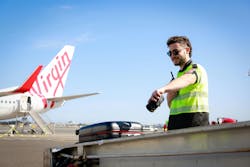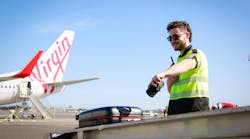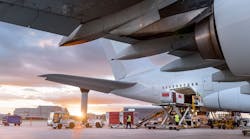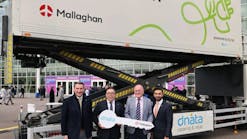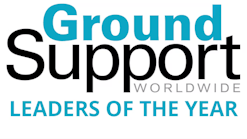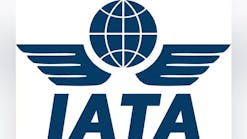Improving the visibility of baggage tracking by airlines and their ground handling service providers by means of digital solutions is the main concept behind IATA Resolution 753, which has been in place for approximately five years.
IATA Resolution 753 is a quality assurance label, which airlines are recommended to follow. It covers the tracking of a baggage item through the sortation, loading and delivery process, according to officials at Swissport.
“Before 753 came into being in 2018, some airlines already followed this model of logging digitally when a bag was checked in, entered the baggage sortation system, was loaded into a cart or container, loaded onto the aircraft, offloaded from the aircraft and placed on the deliver carrousel for the customer to collect on arrival,” officials at Swissport explain. “The concept being to improve visibility should anything go wrong, to locate the bag quicker and can provide evidence of ‘custody’ to attribute fault, e.g., when a bag moved from customer to airline to airport to handler to airline etc. It can also assist with automated and streamlined creation of baggage manifests for flight.”
Earlier in 2024, Virgin Australia unveiled an expansion of its baggage tracking tool to include all domestic and international routes as well as additional tracking notifications for guests.
As part of the tool’s expansion, which Virgin Australia officials say previously only included a portion of the airline’s domestic network, customers can now track their baggage end-to-end via the Virgin Australia app.
According to the airline, the app allows passengers to receive push notifications when their baggage has been checked in, loaded onto the aircraft, transferred to a connecting carrier, and delivered to the baggage carousel upon arrival. The tool also provides information regarding the baggage carousel where the item can be retrieved at the final destination.
As of January this year, officials at Virgin Australia say the tool had been used more than 1.3 million times since first being piloted in May 2023.
“Australians find comfort in the ability to track food deliveries, postal deliveries, technology, even their heart rate, all via apps, and it made sense for travelers to be able to do the same thing when flying Virgin Australia,” says Paul Jones, Virgin Australia chief customer and digital officer. “By further enhancing our Australian-first baggage tracking technology to include all international services and additional notifications, we are giving guests the peace of mind to know where their baggage is at every step of the journey.”
Passengers can track their checked baggage on select Virgin Australia services by downloading the Virgin Australia app and enabling push notifications via app settings, affirms Virgin Australia officials.
Once the app is enabled, a series of push notifications can be sent to the passenger’s phone, providing updates throughout the baggage’s journey. Updates are shared when the bag is checked in, loaded onto the aircraft, transferred to an international partner airline, and available for collection at the final destination, according to officials at Virgin Australia.
From a baggage services point of view, there are various tracking tools available, affirms Swissport.
“For example, the use of forward messages, when a delayed bag is sent on a new flight, is logged with the same points noted as a normal bag, and then when we receive it to process for the customer, we create a baggage delivery order (BDO),” Swissport officials say. “In detail, the courier should also record the time they collect it and deliver it to the customer's address/residence to complete the end-to-end tracking of the item to fully comply with IATA 753.”
Some airlines choose to share this data with customers proactively, such as Delta Air Lines, offering to customers the ability to use their app to see where their items are on their journey, observes Swissport representatives.
“Other airlines, such as Qatar Airways, use the data, linked to the passenger’s booking, to proactively create missing files (advise if hold - AHL) so the customer can have a smoother reporting experience to reduce their inconvenience in the rare event their items go missing. In short, the benefit is information and visibility, we can respond faster and find bags quicker,” they say.
There are various ways that allow ground handling providers to interact with baggage tracking solutions, affirm officials at Swissport.
“Some of which are simple barcode scanners, which are fixed onto the baggage belt system reading the barcodes. These create baggage system messages (BSM), which are translated into time stamps for the airline's log, the exact way this is done varies between airlines. Handheld scanners are used when loading the bags to create the other timestamps along the journey where fixed locations will not work,” Swissport officials note. “Furthermore, because most airline systems are independent, ground handlers have accessed each airline’s portal or booking system to see the details for that flight, others are proactively pushed automatically or manually by the airline via email. Some of these actions were done by airlines before the resolution but the notion was to standardize.”
